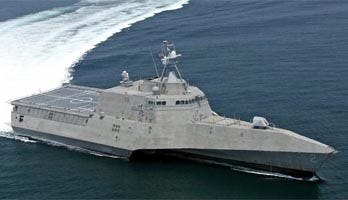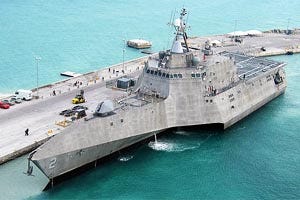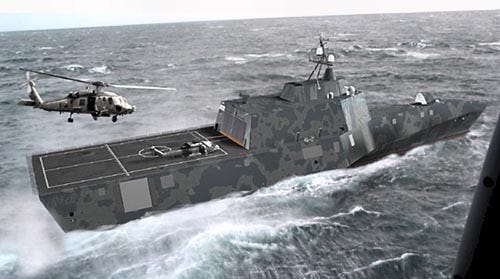USS Tulsa

USS Tulsa Congressman Jim Bridenstine proudly announced June 6 that Secretary of the Navy Ray Mabus named the newest Littoral Combat Ship the USS Tulsa. The Tulsa is an Independence-variant Littoral Combat Ship (LCS). It will be 419 feet long and have a beam length of 103.7 feet and be capable of operating at speeds in excess of 40 knots. Congressman Bridenstine said, “The USS Tulsa will not only honor our city, but will also provide a very important strategic capability in modern warfare. These ships are designed to defeat growing littoral threats and provide access and dominance in the coastal waters. A fast, agile surface combatant, the LCS provides the required war fighting capabilities and operational flexibility to execute focused missions close to the shore such as mine warfare, anti-submarine warfare and surface warfare.” USS Tulsa (LCS 16) will be the second ship named for Oklahoma's second-largest city. The previous USS Tulsa was commissioned in 1922 and decommissioned in 1946, after serving honorably in World War II.

Secretary of the Navy Ray Mabus announced the next three joint high speed vessels (JHSV) will be named USNS Yuma, USNS Bismarck and USNS Burlington, and two littoral combat ships (LCS) will be named USS Billings and USS Tulsa. Littoral combat ships are named to recognize cities that are one of the five most-populated communities in a state. "It is my privilege as secretary of the Navy to name these ships after five great American cities," said Mabus, "establishing a new connection and tradition that forms a bond between a city's residents and the sailors and Marines who serve in its namesake ship. For decades to come, these ships will sail in the fleet, building partnerships and projecting power around the world." USS Tulsa is an Independence-variant littoral combat ship built by Austal USA in Mobile, Ala. Additional information about joint high speed vessels is available online here. Additional information about littoral combat ships is available online here. Initiated in February 2002, the LCS program represents a significant reduction in time to acquire, design and build ships in comparison to any previous ship class. USS Freedom (LCS 1) was delivered to the Navy on Sept. 18, 2008. USS Freedom was constructed by Lockheed Martin at the Marinette Marine Corporation's shipyard in Marinette, Wis.. USS Independence (LCS 2) was delivered to the Navy on Dec. 18, 2009. The Navy's LCS acquisition strategy to down-select to a single design resulted in a highly effective competition and an industry response that resulted in significant potential savings in the LCS program. These competitive bids, coupled with the Navy's desire to increase ship procurement rates to support operational requirements, created an opportunity to award each bidder a fixed-price, 10 ship block buy for a total of 20 ships from fiscal year 2010 to fiscal year 2015. The Navy made the decision in 2009 to deploy LCS 1 nearly two years early and on Feb. 16, 2010, LCS 1 deployed to the 4th Fleet in the U.S. Southern Command area of responsibility. She deployed with a Helicopter Sea Combat Squadron 22 detachment and a U.S. Coast Guard Law Enforcement Detachment. Freedom successfully conducted four drug seizures, netting more than five tons of cocaine, detained nine suspected drug smugglers, and disabled two 'go-fast' drug vessels. Also during its maiden deployment, USS Freedom performed integrated at-sea operations with the USS Carl Vinson (CVN 70) Carrier Strike Group, performed at-sea maneuvers with the former-USS McInerney (FFG 8) and conducted several theater security cooperation port visits in Latin America. She transited the Panama Canal, continued operational deployment in the U.S. 3rd Fleet area of responsibility and arrived at her homeport of San Diego on April 23, 2010. Later in the year USS Freedom also participated in the Rim of the Pacific (RIMPAC) exercise. Even though the Navy opted to send USS Freedom out to sea two years early, there were no changes to the overall scope of LCS 1 testing as a result of early deployment.
Early deployment provided a vital opportunity to collect data in real-world operational scenarios. This data will be invaluable in the ongoing effort to accomplish the larger LCS fleet integration strategy. Early deployment of LCS 1 was a tremendous opportunity to test the ship in a real-world environment and begin integrating this essential ship into our fleet.

USS Tulsa



